Laxmikant Summary: Landmark Judgements and Their Impact- 4 | Indian Polity for UPSC CSE PDF Download
31. I.R. Coelho Case (2007)
- Name of the Case: I.R. Coelho vs. State of Tamil Nadu
- Year of Judgement: 2007
- Popular Name: Ninth Schedule case
- Related Topic/Issue: Judicial review of the ninth schedule
- Related Article/Schedule: 31B & Ninth Schedule
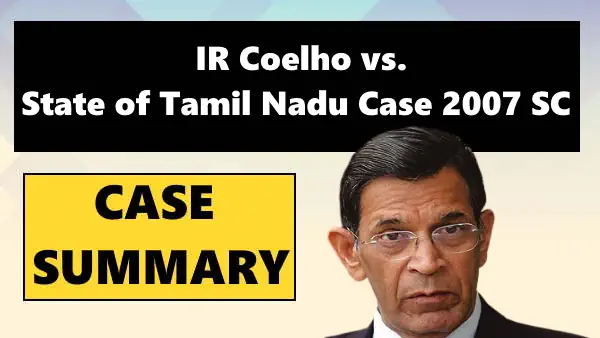
Supreme Court Judgement
The Supreme Court reiterated its decision from the Waman Rao case (1980), affirming that amendments to the Constitution made on or after April 24, 1973, in which the Ninth Schedule is amended by including various laws, can be challenged if they damage or destroy the basic structure of the Constitution. The Court established specific tests to determine the validity of these constitutional amendments. The central question addressed by the Court was whether, after April 24, 1973, when the basic structure doctrine was introduced, Parliament could use Article 31B to shield legislations from fundamental rights by incorporating them into the Ninth Schedule, and, if so, what impact it has on the Court's power of judicial review.
32. Aruna Ramachandra Shanbaug Case (2011)
- Name of the Case: Aruna Ramachandra Shanbaug vs. Union of India
- Year of Judgement: 2011
- Popular Name: Euthanasia case
- Related Topic/Issue: Euthanasia
- Related Article/Schedule: 21
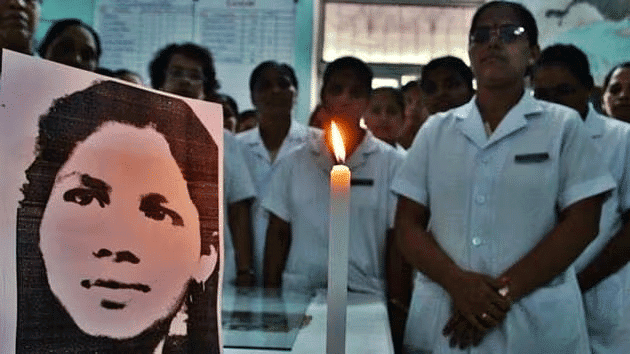
Supreme Court Judgement
The Supreme Court ruled that active euthanasia and assisted death are illegal, while passive euthanasia is permissible under specific conditions, safeguards, and procedures outlined by the Court. The key points include:
- A decision to discontinue life support can be made by parents, spouse, close relatives, or a person acting as a next friend.
- If such a decision is made, it requires approval from the relevant High Court.
- The High Court, upon receiving an application, should promptly form a Bench of at least two Judges and seek the opinion of a committee of three reputed doctors nominated by the Bench.
- The High Court Bench should issue notices to the State and close relatives of the patient, providing them with a copy of the doctor's committee report. After hearing their views, the High Court should deliver its verdict.
33. People's Union For Civil Liberties Case (2013)
- Name of the Case: People's Union for Civil Liberties vs. Union of India
- Year of Judgement: 2013
- Popular Name: NOTA case
- Related Topic/Issue: Electoral reforms
- Related Article/Schedule: 14, 19 & 21
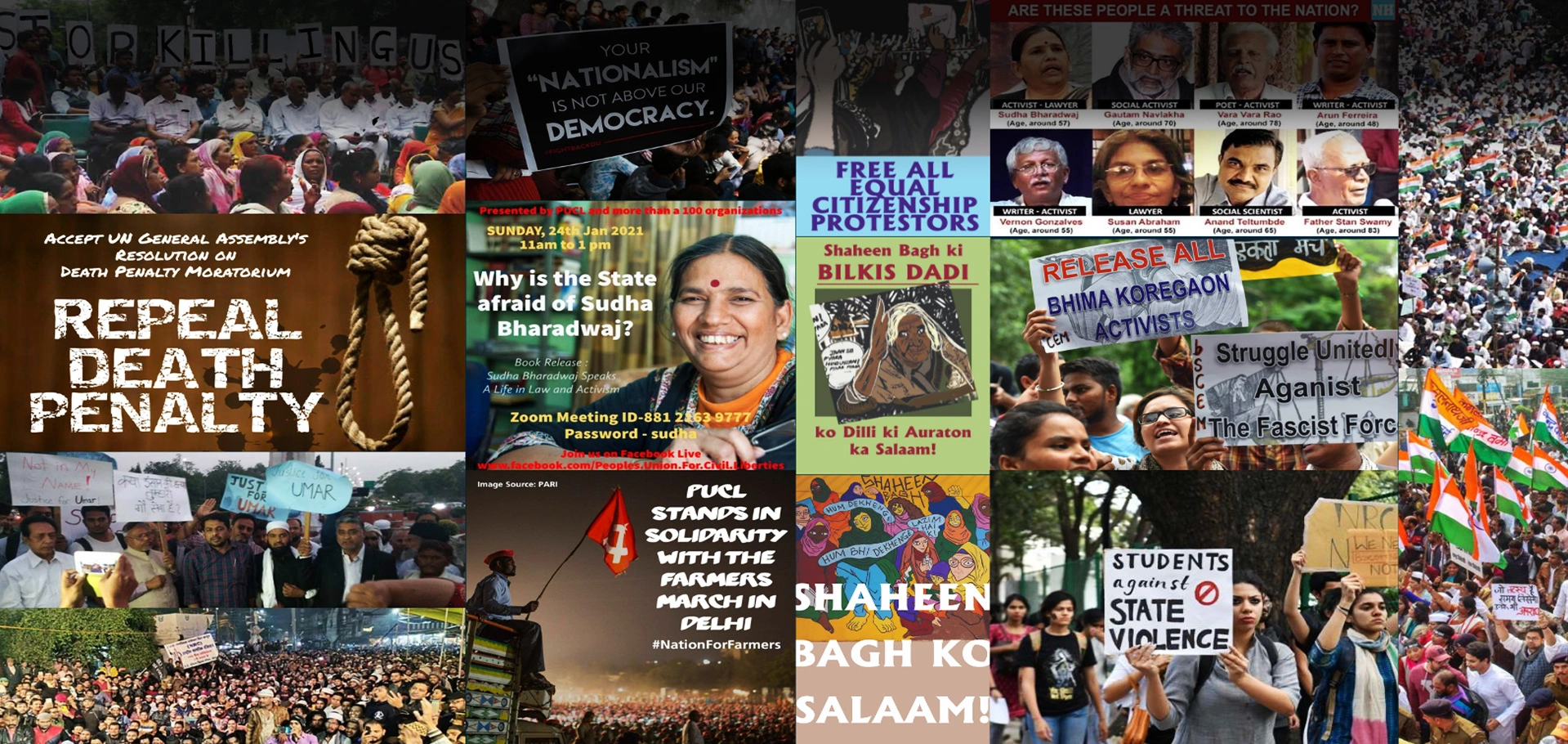
Supreme Court Judgement
The Supreme Court declared that Rules 41(2) & (3) and 49-0 of the Conduct of Election Rules, 1961, recognizing the right of a voter not to vote, are ultra vires Section 128 of the Representation of the People Act, 1951, and Article 19(1)(a) of the Constitution to the extent they violate the secrecy of voting. The court directed the Election Commission to include a "None of the Above" (NOTA) option in ballot papers/EVMs, allowing voters who decide not to vote for any candidate to exercise their right while maintaining secrecy. The court observed:
- The court has the authority to issue directions to protect the right not to vote, ensuring secrecy, similar to the protection provided to voters who cast their votes.
- Directions can be given to protect the right of expression under Article 19(1)(a) and avoid discrimination by introducing the NOTA button in EVMs.
- Article 19 guarantees the right to speak, criticize, and disagree, and not allowing a person to cast a negative vote undermines freedom of expression and the right to liberty under Article 21.
- Protection of elector's identity and ensuring secrecy are essential for free and fair elections, and any arbitrary distinction between voters who cast or do not cast their votes violates Article 14.
Impact of the Judgement: Following this judgement, the Election Commission implemented the NOTA option in ballot papers/EVMs, starting from the General Election in 2013 and continuing in subsequent elections.
34. Lily Thomas Case (2013)
- Name of the Case: Lily Thomas vs. Union of India
- Year of Judgement: 2013
- Popular Name: Criminalization of politics
- Related Topic/Issue: 102 & 191
- Related Article/Schedule: Articles 102 and 191
Supreme Court Judgement
The Supreme Court ruled that members of Parliament and State legislatures convicted of offenses will lose their membership immediately, disqualifying them from the date of conviction. It struck down Section 8(4) of the Representation of the People Act, 1951, declaring it unconstitutional. The section allowed convicted members a three-month period to appeal in a higher court and obtain a stay on their conviction and sentence by the trial court. The court held that Parliament lacks the power under Articles 102 and 191 to create different laws for disqualification before and after becoming a member. Section 8(4), providing a saving for sitting members from disqualification, was deemed ultra vires the constitution.
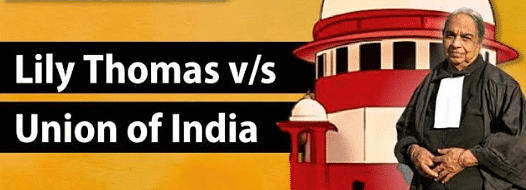
Impact of the Judgement
The judgement resulted in the immediate disqualification of several convicted members of Parliament and State legislatures. In an attempt to override this decision, the Representation of the People (Second Amendment and Validation) Bill, 2013, was introduced but later withdrawn by the Government.
35. T.S.R. Subramanian Case (2013)
- Name of the Case: T.S.R. Subramanian vs. Union of India
- Year of Judgement: 2013
- Popular Name: Civil service reforms
- Related Topic/Issue: Civil service reforms
- Related Article/Schedule: Not specified
Supreme Court Judgement
The Supreme Court issued directives to the central government, state governments, and union territories to implement civil service reforms for effective, efficient, and transparent administration. The directions included the constitution of Civil Service Boards to advise on transfers, postings, disciplinary actions, and other service matters. Additionally, it mandated a fixed minimum tenure for various civil servants and emphasized that civil servants should act based on written instructions, avoiding verbal or oral directives unless formally recorded.
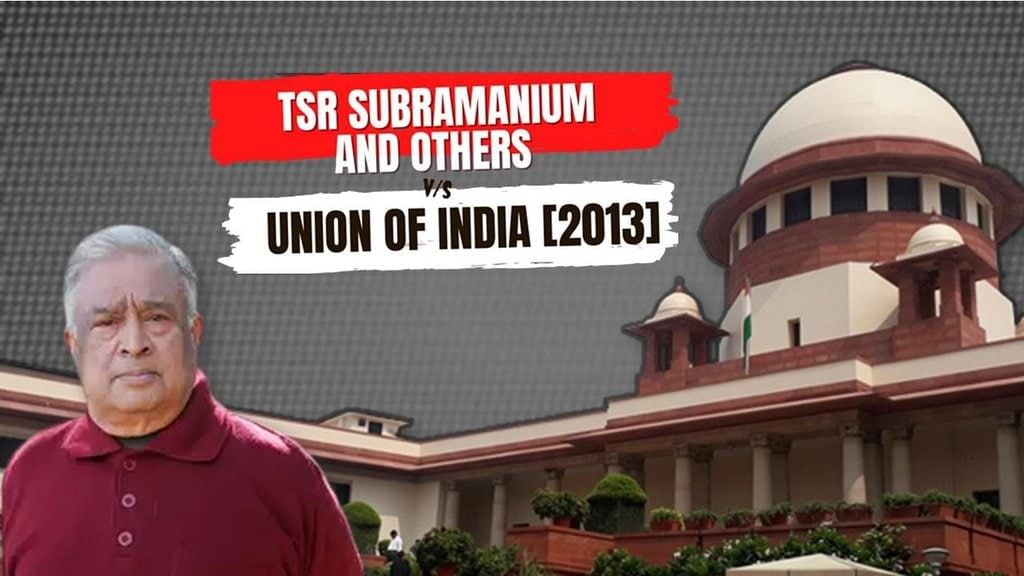
Impact of the Judgement
The judgement prompted amendments to Rule 7 of the lAS, IPS, and IFoS (Cadre) Rules through a 2014 notification. The respective Cadre Controlling Authorities for Central Services were directed to implement the Supreme Court's directions. However, the effectiveness of Civil Service Boards in States/UTs has been limited.
36. National Legal Services Authority Case (2014)
- Name of the Case: National Legal Services Authority vs. Union of India
- Year of Judgement: 2014
- Popular Name: Rights of transgender persons
- Related Topic/Issue: Rights of transgender persons
- Related Article/Schedule: 14 & 21
Supreme Court Judgement
The Supreme Court declared Transgenders, including Hijras/Eunuchs, as the 'third gender' and affirmed that the fundamental rights granted under Part III of the constitution are equally applicable to them. It upheld the right of Transgender persons to determine their self-identified gender and directed the Central and State Governments to legally recognize their gender identity, whether male, female, or as the third gender. The court also instructed the governments to treat them as socially and educationally backward citizens, providing reservations for admissions in educational institutions and public appointments. Non-recognition of Transgender individuals was deemed a violation of equal protection under Article 14, and Article 21 was interpreted to protect the right to self-determination of gender, integral to personal autonomy and self-determination.

Impact of the Judgement
The judgement led to the enactment of the Transgender Persons (Protection of Rights) Act, 2019. The act aims to protect the rights and welfare of transgender persons, prohibiting discrimination and recognizing their self-perceived gender identity.
37. Shreya Singhal Case (2015)
- Name of the Case: Shreya Singhal vs. Union of India
- Year of Judgement: 2015
- Popular Name: Restrictions on online speech
- Related Topic/Issue: Restrictions on online speech
- Related Article/Schedule: 19
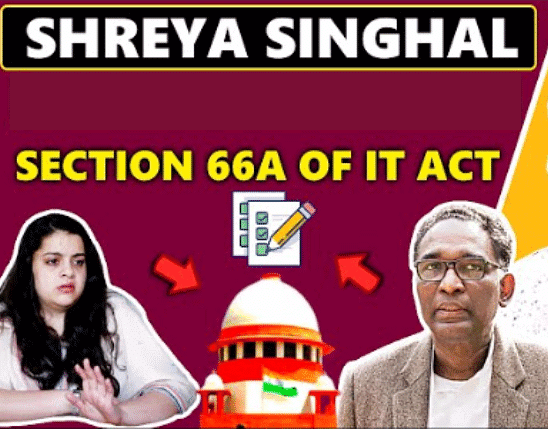
Supreme Court Judgement
The Supreme Court invalidated section 66A of the Information Technology Act (2000), which imposed penalties for sending offensive messages through a computer resource or communication device. The Court declared the section as a whole to be in violation of the freedom of speech and expression guaranteed under Article 19(1)(a). It emphasized that the section does not qualify for protection under Article 19(2) as it defines an offense that is both vague and overly broad. Additionally, the Court stated that the broader reach of circulation over the internet cannot curtail the content of the right under Article 19(1)(a) nor justify the denial of that right.
38. SUPREME COURT ADVOCATES-ON-RECORD ASSOCIATION CASE (2015)
- Name of the Case: Supreme Court Advocates-on-Record Association vs. Union of India
- Year of Judgement: 2015
- Popular Name: Fourth Judges case or NJAC case
- Related Topic/Issue: Appointment of Supreme Court and High Court Judges
- Related Article/Schedule: 124 & 217
Supreme Court Judgement
The Supreme Court declared the 99th Amendment Act (2014) unconstitutional and void, citing its impact on the independence of the judiciary, which is an integral part of the basic structure of the constitution. It also deemed the National Judicial Appointments Commission Act (2014) as unconstitutional and void. The Court reinstated the previous 'collegium system' for the appointment of judges to the Supreme Court and the High Courts. It directed the listing of the case to explore potential measures for enhancing the functionality of the 'collegium system'.
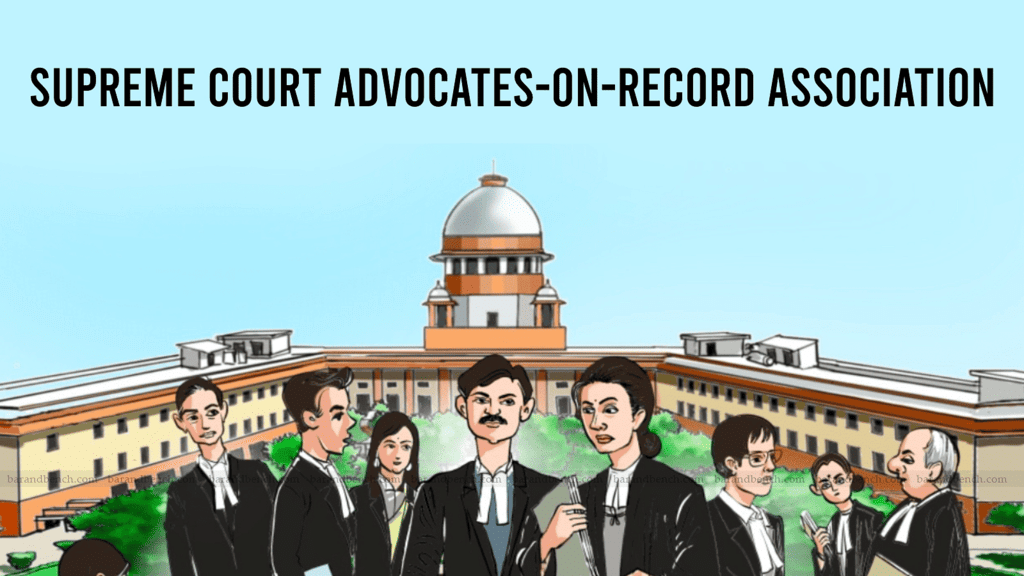
Impact of the Judgement
As a result of this judgement, both the 99th Amendment Act (2014) and the National Judicial Appointments Commission Act (2014) were rendered invalid. Consequently, the earlier 'collegium system' for appointing judges to the Supreme Court and the High Courts was reinstated.
39. Shayara Bano Case (2017)
- Name of the Case: Shayara Bano vs. Union of India
- Year of Judgement: 2017
- Popular Name: Triple Talaq case
- Related Topic/Issue: Divorce in the Muslim community
- Related Article/Schedule: 14
Supreme Court Judgement
The Supreme Court declared the practice of triple talaq ('talaq-e-biddat') unconstitutional. It ruled that this form of talaq, allowing Muslim men to instantly divorce their wives, is manifestly arbitrary as it enables the dissolution of marital ties capriciously and whimsically without attempts at reconciliation. The court found this form of talaq in violation of the fundamental right under Article 14 of the Constitution. Additionally, Section 2 of the Muslim Personal Law (Shariat) Application Act, 1937, recognizing and enforcing triple talaq, was declared void. The court emphasized that triple talaq contradicts the basic tenets of the Holy Quran and directed the central government to formulate a law within six months to regulate divorce in the Muslim community. During this period, the court imposed an injunction against the pronouncement of triple talaq.
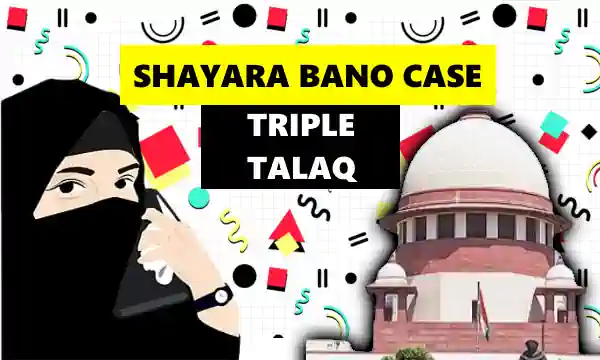
Impact of the Judgement
This judgement resulted in the enactment of the Muslim Women (Protection of Rights on Marriage) Act, 2019, commonly known as the 'Triple Talaq Act.' The act safeguards the rights of married Muslim women and prohibits the pronouncement of talaq by their husbands.
40. K.S. Puttaswamy Case (2017)
- Name of the Case: K.S. Puttaswamy vs. Union of India
- Year of Judgement: 2017
- Popular Name: Right to privacy case
- Related Topic/Issue: Fundamental right to privacy
- Related Article/Schedule: 21
Supreme Court Judgement
The Supreme Court declared the right to privacy as a fundamental right, protected under Article 21 as an intrinsic part of the right to life and personal liberty. It emphasized that privacy is integral to individual autonomy and the ability to control vital aspects of one's life. However, it clarified that the right to privacy is not absolute and is subject to reasonable restrictions defined by the Constitution's fundamental freedoms. Any law encroaching on privacy must meet the criteria of legality, need, and proportionality.
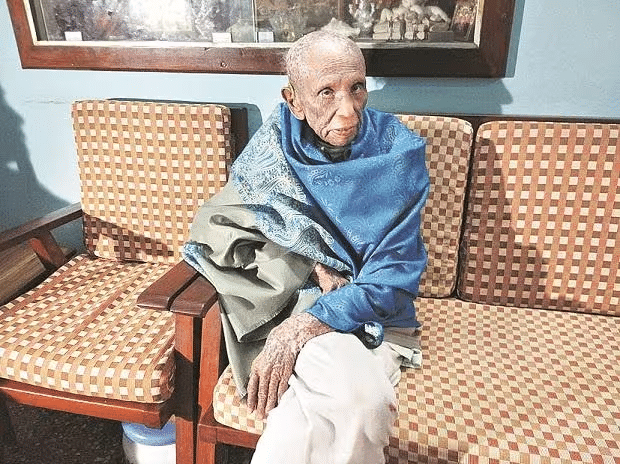
Impact of the Judgement
This landmark judgement overturned earlier decisions in the M.P. Sharma case (1954) and Kharak Singh case (1962) and established the correct legal position on the fundamental right to privacy. It influenced subsequent Supreme Court judgements, including those in the Indian Young Lawyers Association case (2018), Joseph Shine case (2018), Navtej Singh Johar case (2018), and others.
Building on this judgement, the Supreme Court, in 2018, delivered a separate judgement on the validity of the Aadhaar law, known as the Aadhaar judgement or Puttaswamy-II judgement. It upheld the constitutional validity of the Aadhaar Act, stating that the requirement for demographic and biometric information does not violate the fundamental right to privacy. While endorsing the overall framework, the court struck down certain provisions and suggested changes, leading to the enactment of the Aadhaar and Other Laws (Amendment) Act, 2019.
|
151 videos|780 docs|202 tests
|
FAQs on Laxmikant Summary: Landmark Judgements and Their Impact- 4 - Indian Polity for UPSC CSE
| 1. What is the I.R. Coelho Case (2007)? |  |
| 2. What was the significance of the Aruna Ramachandra Shanbaug Case (2011)? |  |
| 3. What was the ruling in the People's Union For Civil Liberties Case (2013)? |  |
| 4. What was the impact of the Shreya Singhal Case (2015)? |  |
| 5. What was the outcome of the Shayara Bano Case (2017)? |  |





















